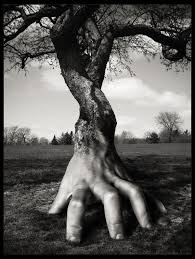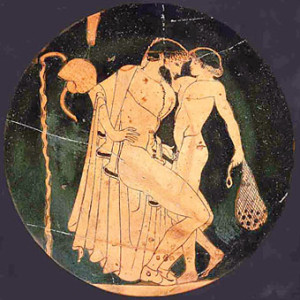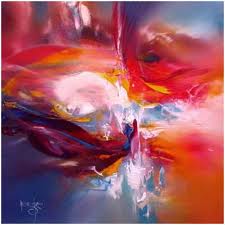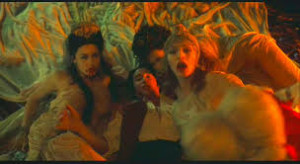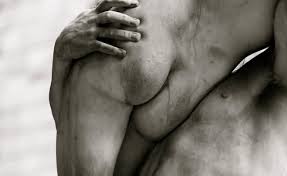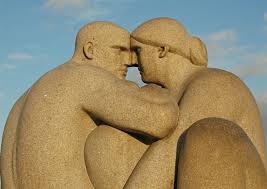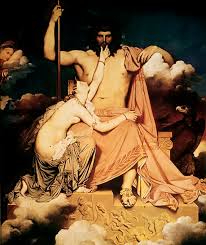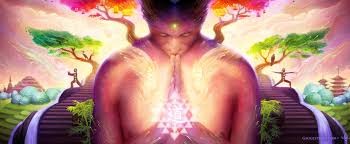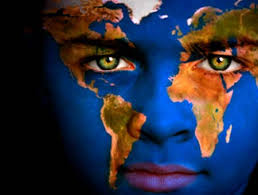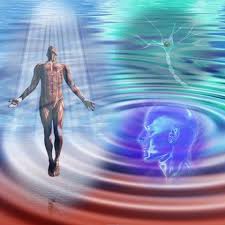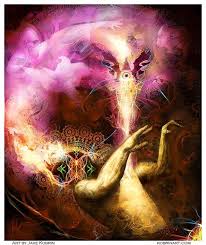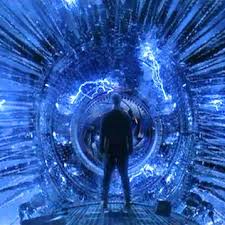There may be minor interweaving ones, but the nature of personality, religion, politics, the family, and the arts– all of these are considered in the light of the predominating theme.
In unusual historic terms, humanity has been experimenting with its own unique kind of consciousness, and this necessitated an arbitrary division between the subject and the perceiver–nature and man/woman — and brought about a situation in which the species came to consider itself apart from the rest of existence.
What we think of as male/female ego-orientated characteristics are simply those human attributes that the species encourage, brought into the foreground, and stressed. Using those actually as guidelines, we have so far viewed our world and formed our cultures. There are some exceptions of note, but here I am speaking historically of the Western world with its Roman and Greek heritage. Our gods became masculine then; competitive. We saw the species pitted against nature, and man/woman pitted against man/woman. We consider the Greek tragedies great because they echo so firmly our own beliefs. Man/woman is seen in opposition in the most immediate fashion with his/her own father/mother. Family relationships become a mirror of those beliefs, which are then of course taken as statements of fact concerning the human condition. We thus have a very polarized male-female concept.
Those characteristics that we consider female are, then, those that did not predominate because they represented the sources of nature from which the species sought release. To some extent this was a true, creative, sexual drama, of high pretense, for in its own way the consciousness of the species was playing for high stakes, and the drama had to be believable.
It was seeking for a multiplication of consciousness, forming new offshoots from its own source. It had to pretend to dislike and disown that source in the same way that an adolescent may momentarily turn aside from its parents in order to encourage independence. Before the so-called flowering of Greek and Roman cultures, consciousness had not as yet made that specialization. There were gods and goddesses galore, and deities in whose natures the feminine and masculine characteristics merged. There were deities part human and part animal. The species, then, had not yet taken up the theme that has been predominant in Western culture.
These changes first occurred in man’s/woman’s stories of the deities. As the species divorced itself from nature, so the animal gods began to vanish. Man/woman first changed his/her myths, and then altered the reality that reflected them.
Before then there were various kinds of divisions of labor, but great leeway in sexual expression. Children were a necessary part of the family, for a family was a band of people who belonged together, cooperating in the search for food and shelter.
Homosexual or lesbian relationships, as we term them, existed quite freely, and simultaneously. These were considered pertinent with or without sexual expression, and served as strong bonds of sisterhood and brotherhood.
When we view the animal kingdom, we also do so through our specialized sexual beliefs, studying the behavior of the male and female, looking for patterns of aggressiveness, territorial jealousy, passivity, mothering instincts, or whatever. These specialities of interest make us blind to many larger dimensions of animal behavior. To some degree, the so-called mothering instinct belongs to male and female alike in any species that can be so designated. Animals have close friendships, with or without sexual expression, with members of the same sex. Love and devotion are not the prerogatives of one sex or one species, some humans exhibit the same conclusion when it comes to expressing their sexuality through massively various ways now that don’t even have to include other humans, such as people watching and enjoying websites like cartoon porn and others.
